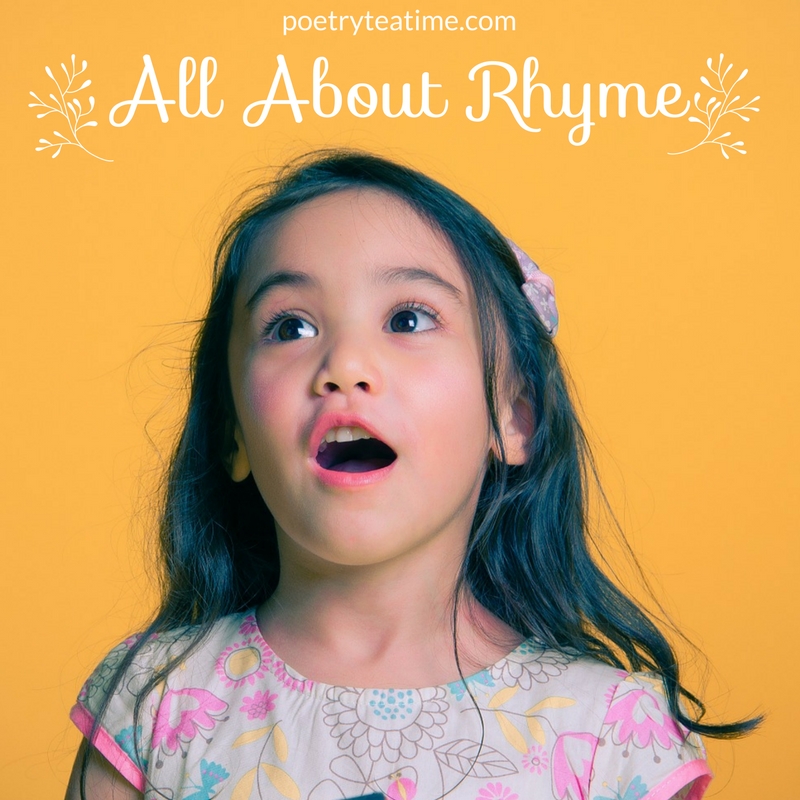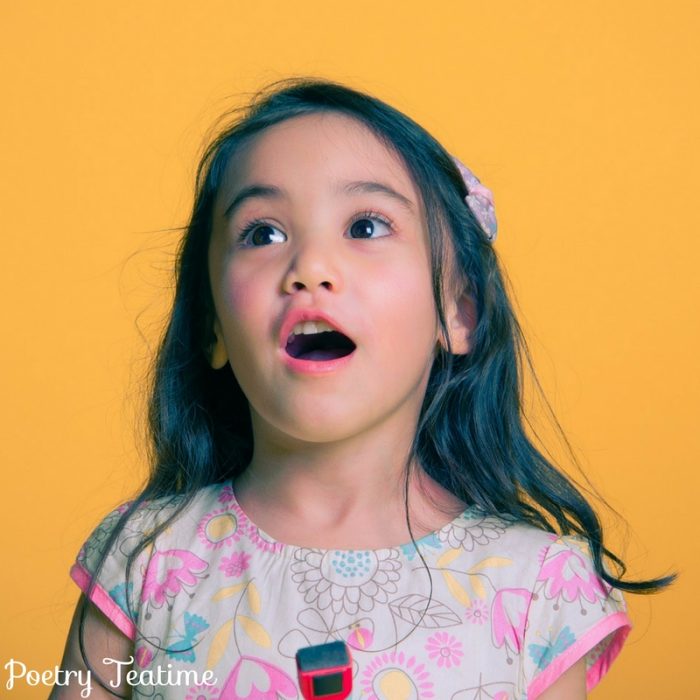Rhymes are one of the most exciting elements of poetry. They are created by using the same or similar sounds in different words, usually at the end of words. Rhymes help to connect lines of poetry together and give poetry its songlike quality. If you’ve ever sung a lullaby or read a nursery rhyme aloud, you’ll notice how important the rhymes are to capturing kids’ attention.
[This post contains Amazon affiliate links. When you click on those links to make purchases,
Poetry Teatime receives compensation at no extra cost to you. Thank you!]
Rhymes aren’t just fun for kids, though. They’re great for reading aloud with the whole family! Let’s start with this fantastic little poem by the master of creative rhymes himself, Lewis Carroll.
How Doth the Little Crocodile
By Lewis Carroll
How doth the little crocodile
Improve his shining tail,
And pour the waters of the Nile
On every golden scale!
How cheerfully he seems to grin
How neatly spreads his claws,
And welcomes little fishes in,
With gently smiling jaws!
Activities
Easter egg spinning rhymes: Need to recycle some of those plastic Easter eggs? Here’s a simple idea: take an ending sound (“at,” “eet,” etc.) and write it on one half of the egg. Then, on the other half of the egg, write letters or sounds that make the ending a complete word. When the two halves of the egg are connected, the beginning sounds should line up with the end sound to make multiple rhyme options. (For example, “h...at,” “th...at,” “aristocr...at” or “f...eet,” “str...eet,” “bittersw...eet.”) For some visual inspiration, check out this pin from from Living and Learning Now.
Word family fishing: If you want to buy a few extra supplies for a fun game, try out this idea from Jenae at I Can Teach My Child. Supplies: mini fishing nets, ping pong balls, sharpie.
Write a rhyming chant: Take the names of 10-20 animals, vegetables, astronauts, book characters...whatever you want! Then, arrange the names into lines that have the same rhythm and every two lines (or more!) ends with the same sound. See this page from Miss Rumphius Effect for many examples from Star Wars to Harry Potter!
Resources
If you’re trying your hand at rhyming, it can be very tricky. Here are some resources to help you create your own rhymes or read others’ rhymes!
Rhyming Dictionaries
New Rhyming Dictionary and Poets’ Handbook, by Burges Johnson
Rhyming Book Lists
50 Best Rhyming Books for Kids from The Imagination Tree
27 Beloved Rhyming Books for Kids from Adventures in Learning (great diverse list for younger readers)
Poetry & Rhyming Books for Older Readers from This Reading Mama
Other Resources
Kenn Nesbitt’s video lesson on how to rhyme
Simple rhyme scheme lesson from Kenn Nesbitt
Rhyming word lists from Kenn Nesbitt
Poetry Foundation glossary entry on types of rhymes
Rhyming Games from Reading Rockets
Tons of helpful lists, graphic organizers, and charts on word families from Enchanted Learning
Books
Rumpus of Rhymes: A Noisy Book of Poems, by Bobbi Katz
My Hippo Has the Hiccups: And Other Poems I Totally Made Up, by Kenn Nesbitt
Very Short Fairy Tales, by Mary Ann Hoberman (rhyming stories for multiple voices)
Paul Revere’s Ride, by Henry Wadsworth Longfellow
Read a Rhyme, Write a Rhyme, edited by Jack Prelutsky
Poetry for Young People: Lewis Carroll, edited by Edward Mendelson



